A Brief History of Lytham
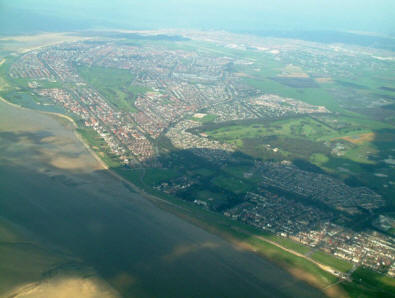 Lytham is first thought to have been settled by the Anglo Saxons c.600AD. About
900AD, the Fylde, was subject to a huge wave of immigration by Vikings. These were Irish-Norse
Vikings and had been expelled from Dublin. They crossed the Irish Sea forming new fishing,
farming and trading communities in Lancashire and Cumbria. Lytham is first thought to have been settled by the Anglo Saxons c.600AD. About
900AD, the Fylde, was subject to a huge wave of immigration by Vikings. These were Irish-Norse
Vikings and had been expelled from Dublin. They crossed the Irish Sea forming new fishing,
farming and trading communities in Lancashire and Cumbria.
The Vikings became Overlords of the Lytham area and local place names such as
Kilgrimol (near Lytham) and Kellermergh (by the Birley Arms, Warton), date from this period.
After the conquest of Northern England by the Normans, Lytham’s Viking Overlords
seem to have adapted to Norman rule by becoming Norman Thanes and the second generation were given
French names. The last of these Norse descendents was Richard Fitz Roger. He had no heir and
bequeathed all his lands at Lytham to the Benedictine Monks of Durham.
For a period of 350 years Lytham belonged to Durham, and it was governed by a succession of
Priors sent by Durham to reside in the small Benedictine Priory in the Lytham Hall Park area. With
the exception of the occasional plague, inundation, storm and riot, the centuries passed peacefully
here, mainly because of Lytham’s isolation.
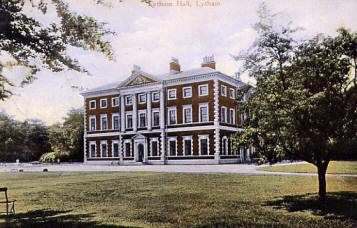 After the Dissolution of the Monasteries, Lytham had several successive
landowners who subleased Lytham to tenant farmers such as Dannett (in the 1540s and 50s) and
the Rodgerley family (in the 1580s and 1590s). These tenant farmers ruled the entire Lytham
Estate and had similar rights to those enjoyed by the previous priors. After the Dissolution of the Monasteries, Lytham had several successive
landowners who subleased Lytham to tenant farmers such as Dannett (in the 1540s and 50s) and
the Rodgerley family (in the 1580s and 1590s). These tenant farmers ruled the entire Lytham
Estate and had similar rights to those enjoyed by the previous priors.
In 1606, as part of a land deal, the Clifton family of nearby Westby came into
possession of Lytham. They made it their family seat, converting the old priory buildings into
Lytham Hall and the estate became Lytham Manor. In their 250 year association with Lytham, the
Clifton family carried out huge agricultural improvements to their large estate.
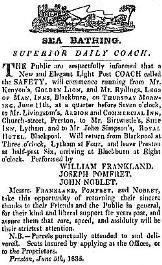 The health benefits of mineral springs such as those at Bath and Buxton were
already well-known in the eighteenth century. As early as 1707 doctors believed that bathing
and drinking sea-water also had great health benefits. The health benefits of mineral springs such as those at Bath and Buxton were
already well-known in the eighteenth century. As early as 1707 doctors believed that bathing
and drinking sea-water also had great health benefits.
Between 1789 and 1805, King George III visited Weymouth no less than 14 times
for this very purpose to help cure his ‘nervous disorder'. This helped popularise
sea bathing and around the British coast villages such as Lytham started to
attract visitors in ever-increasing numbers.
From the 1790s onwards, the Clifton family oversaw the transition of Lytham from
farming and fishing community, to a health resort and residential village but progress was
initially slow.
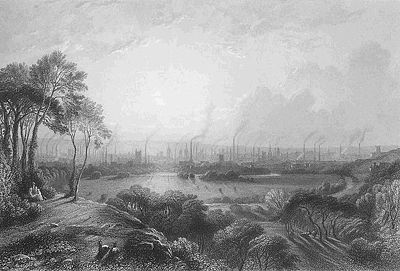
The industrial revolution transformed many towns in Lancashire
creating large manufacturing districts and greatly increased the population of the county.
Lytham remained isolated from manufacturing but benefited from the prosperity of
Preston because as the River Ribble was too shallow for larger vessels, Lytham was used as a port
to transfer cargos onto lighters.
As the manufacturers' wealth grew they visited Lytham for their health
and hotels were built and enlarged. Several schools opened at Lytham for the sons and daughters of
industrialists.
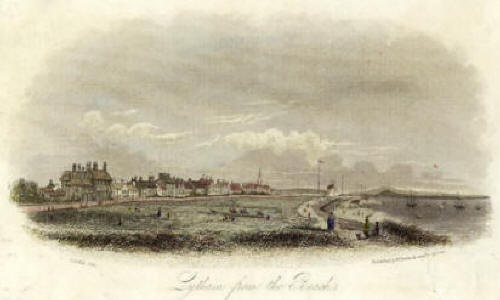 Some businessmen built houses here as holiday homes or for their
retirement but many more were discouraged by the old-fashioned short leases of land
offered by the Clifton Estate (for 20 or 40 years - after that the land and property
reverted back to the Clifton Family). Lytham also remained quite remote and isolated
because of the poor state of the roads. Some businessmen built houses here as holiday homes or for their
retirement but many more were discouraged by the old-fashioned short leases of land
offered by the Clifton Estate (for 20 or 40 years - after that the land and property
reverted back to the Clifton Family). Lytham also remained quite remote and isolated
because of the poor state of the roads.
It wasn't until improvements in roads and the construction of the railway that
large-scale development took place. Land then began to be leased for 99, and then 999 years.
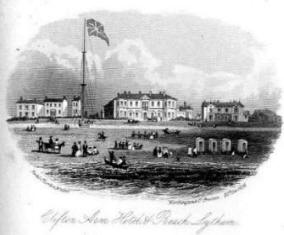
The poor quality farmland and sand dunes which lay along the coast had for
centuries produced little or no income for the Cliftons It was levelled and became streets and
houses providing a huge income from sale of land and buildings and income from ground rents.
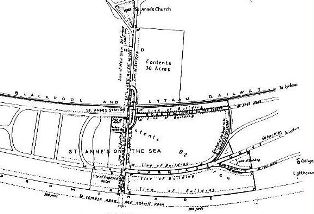 In the 1870s the sand dunes and farmland at the West End of Lytham Manor
was developed into the new resort of St.Annes on the Sea. In the 1870s the sand dunes and farmland at the West End of Lytham Manor
was developed into the new resort of St.Annes on the Sea.
|